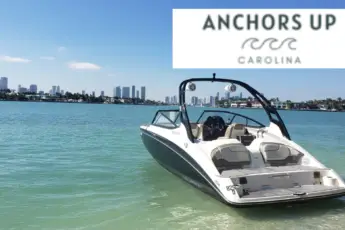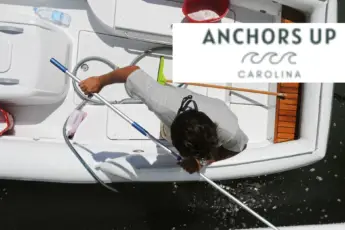One of the more dreaded experiences for boat owners is filling the gas tank after it has begun to run low. Without a doubt, fueling boats is expensive for a couple of reasons. First, if you’re filling at a marina, fuel prices are higher. Secondly, watercraft fuel tanks are typically high in capacity which racks up the fuel bill. However, the amount of fuel in a vessel before storing is essential to take into consideration. Boats should never be stored completely full. So why should a boat’s gas tank never be completely filled?
Fuel Precautions
I am not going to go as far as saying that fueling a boat is overly dangerous but consideration must be taken.
Yes, boats catch fire during the fueling process but is highly unlikely. Here are considerations when filling up the tank.
Turn Off All Electronics
One of the primary causes of fires aboard vessels during fueling results from an ignition source. The small spark can ignite fuel in a matter of seconds.
Without question, it is critical to turn off all electronics before beginning the fueling process.
Control The Flow Of Fuel
Unfortunately, depending on the fuel pump the flow rate varies. As a former captain, I have added fuel in a multitude of marinas.
Understand that you should slowly compress the lever on the nozzle. Compressing the lever slowly will allow you to speed up the flow as needed. Never start by fully engaging the lever.
Unfortunately, fast fuel pumps cause airpockets to form within the tank which results in gasoline spitting from the intake. Spilled fuel presents a danger and must be cleaned quickly with oil absorbent pads.
Have Passengers Leave The Boat
As odd as it sounds it is important to ask all passengers to depart the vessel for a couple of reasons. First, if the boat catches fire, the passengers will already be in a safe location.
Secondly, you are at lower risk of the nozzle from becoming dislodged during the fueling process with people moving about the boat.
The Impacts Of Temperatures On Boat Gas Tanks
Without a doubt, gasoline within tanks is impacted by temperatures. Importantly, as the temperature falls, the gasoline within the tank compresses. Conversely, as the temperature rises, the gasoline expands.
It should be mentioned that the vast majority of fuel stations store holding containers beneath the ground.
The subsurface temperatures are typically lower and for this reason, the gasoline condenses. However, as the fuel is pumped up and out air temperature plays a critical factor.
During the cold season, the gasoline will remain condensed however, if the temperature is high, the gas expands. At times, ice cold fuel can be pumped out of the ground before being exposed to warm air temperatures.
Never Fill A Boat Tank Completely Before Storing
I will start off by saying that I have been scolded by dry rack marinas on a consistent basis for filling a tank before storing. Without a doubt I liked my boat filled before heading out on the next trip.
So, to answer why should a boat’s gas tank never be completely filled is simple. The answer lies directly on the temperature that boat is stored.
Unquestionably, you won’t need to be concerned about storing a boat in freezing weather. Freezing cold temperatures do not cause gasoline to expand.
Gasoline Overflow
Unfortunately, as temperatures rise the gasoline expands. When boat owners press tanks to the top they are prone to leaking.
The leaking occurs only because fuel was added to the neck of the fill spout. Expansion causes the gasoline to pour out of the vents or the top of the fuel fill.
Implications To Over Filling Boats
Implications arise from overfilling boats and especially in dry rack marinas. In dry racks, boats are stacked row above row leaving sometimes six levels of watercrafts.
Unfortunately, as the temperatures rise, completely filled boat gas tanks expand and leak on the boats below.
The last thing a boat owner wants to do is arrive to their watercraft with gasoline drips scattered about the surface.
Comparatively, the same applies to keeping a boat on a trailer in the yard. While fuel leakage won’t drip on boats below, the gasoline is prone to expanding and leaking out of the vessel and onto the ground below.
So Why Should A Boat’s Gas Tank Never Be Completely Filled
Now you know that rising air temperatures cause gasoline to expand and leak out of the fill or vent holes. Avoid damaging other surrounding vessels by filling your boat to its entirety in a dry rack. Alternatively, expect that fuel will leak with rising temperatures while it is kept on the trailer. I suggest filling the tank to about 90 percent.







